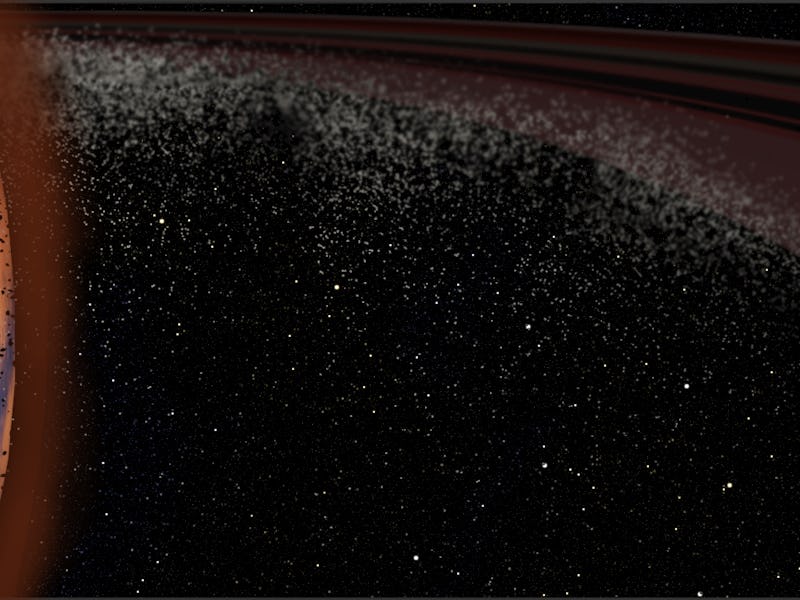Mars's Moon Phobos Might Be the Cosmic Version of a Phoenix

Growing evidence suggests that Mars not only sported it own planetary rings in the past, but will acquire them again in the future. Like others who have investigated the prospect of Martian rings before, a team of researchers from Purdue University in Lafayette, Indiana developed a new model focusing on the moon Phobos, which is predicted to approach Mars in the next 40 to 70 million years, break up into a slew of rock and dust, and coalesce into a neat little ring. But if that’s the fate physics has in store for such satellite moons, why would we think it was happening for the first time?
New research shows it’s possible a large collision could have taken place on Mars 4.3 billion years ago, resulting in a repeated cycle: the material ejected by the impact forms a moon, which is eventually ripped apart into a ring, which eventually spreads out to form a new, smaller moon, which is itself eventually sucked back in and ripped apart, too. Co-author Andrew Hesselbrock believes this cycle could have already occurred between three and seven times, resulting in the iteration of Phobos we know today. The findings were published Monday in the journal Nature Geoscience.
“The really cool thing is that if the ejected material were to land on Mars’s surface, you have moon dirt that could be kilometers thick,” Hesselbrock tells Inverse. “And so you have these deposits that would be spaced in time — a layer and then, a few hundred million years later, the next layer. There are rovers studying deposits and they have no idea where they came from; this could be an alternative hypothesis for people looking at Martian geology.”
The cycle isn’t endless, though. Each time a moon is reformed, it’s about five times smaller than the moon that came before, meaning eventually the material will stop coalescing as anything recognizable.
And while in the past we thought that when a moon crashed on Mars that was more or less the end of it, this model shows not only that the ejected material can form rings, but that the vast majority actually falls onto the surface. Hesselbrock and his colleagues say that according to their simulations that when Phobos breaks up this time, about 80 percent of the debris will end up deposited on the surface, which means all kinds of new stuff will be introduced into the Martian atmosphere.
“I’m not a geologist, what happens it settles there I have no idea,” Hesselbrock says. “But the vast amount — that’s significant.”
Abstract
The Martian moons Phobos and Deimos may have accreted from a ring of impact debris, but explaining their origin from a single giant impact has proven difficult. One clue may lie in the orbit of Phobos that is slowly decaying as the satellite undergoes tidal interactions with Mars. In about 70 million years, Phobos is predicted to reach the location of tidal breakup and break apart to form a new ring around the planet. Here we use numerical simulations to suggest that the resulting ring will viscously spread to eventually deposit about 80% of debris onto Mars; the remaining 20% of debris will accrete into a new generation of satellites. Furthermore, we propose that this process has occurred repeatedly throughout Martian history. In our simulations, beginning with a large satellite formed after a giant impact with early Mars, we find that between three and seven ring–satellite cycles over the past 4.3 billion years can explain Phobos and Deimos as they are observed today. Such a scenario implies the deposition of significant ring material onto Mars during each cycle. We hypothesize that some anomalous sedimentary deposits observed on Mars may be linked to these periodic episodes of ring deposition.